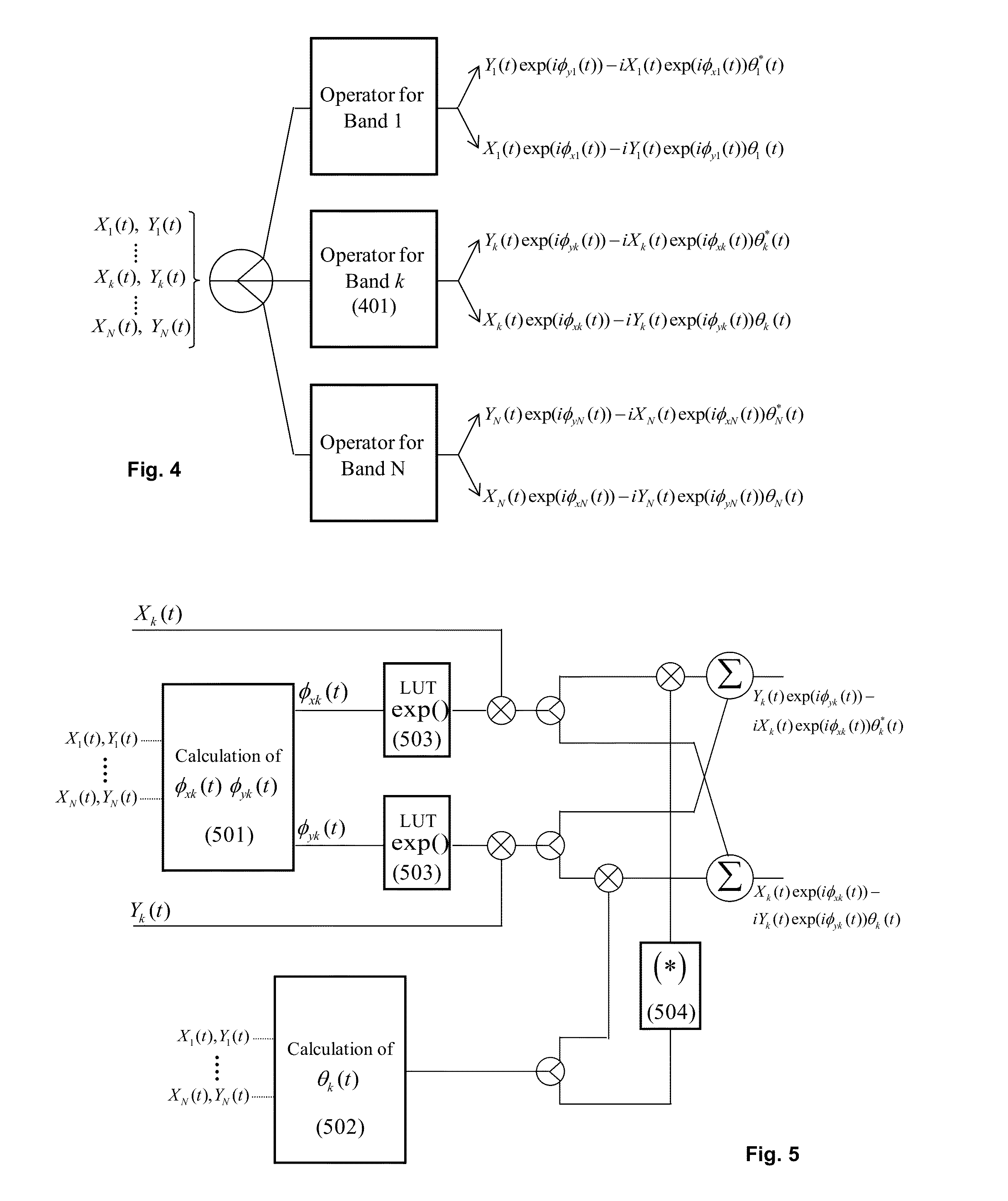Inter-band cross-phase modulation compensation for the mitigation of intra-channel nonlinear impairments in optical fiber transmission
a cross-phase modulation compensation and optical fiber technology, applied in electromagnetic transmission, transmission, electrical equipment, etc., can solve the problems of reducing the transmission distance of optical fiber, severely distorting the signal, and ultimately limited capacity of optical fiber, so as to reduce the complexity of nonlinearity compensation and increase the capacity or transmission distance of fiber
- Summary
- Abstract
- Description
- Claims
- Application Information
AI Technical Summary
Benefits of technology
Problems solved by technology
Method used
Image
Examples
Embodiment Construction
[0021]The invention is directed to a technique that drastically reduces the number of stages and therefore, the power consumption of the DSP chip. Typically, DSP algorithms based on DBP require multiple algorithmic stages. In the classic DBP method, each stage involves two operations, namely: frequency-domain chromatic dispersion compensation (CDC) and time-domain nonlinearity de-rotation (NLdR). The number of required stages depends on the transmission length, dispersion map and channel optical power. In general, the number of stages is chosen to be a compromise between performance and complexity. However, a minimum number of stages are necessary to achieve some performance improvement. Because frequency-domain CDC typically involves fast Fourier transform pairs (FFT / IFFT), the algorithmic complexity of classic DBP is prohibitive. The present invention drastically reduces the number of stages.
[0022]FIG. 1 is shows a block diagram of a fiber communication system with coherent detect...
PUM
 Login to View More
Login to View More Abstract
Description
Claims
Application Information
 Login to View More
Login to View More - R&D
- Intellectual Property
- Life Sciences
- Materials
- Tech Scout
- Unparalleled Data Quality
- Higher Quality Content
- 60% Fewer Hallucinations
Browse by: Latest US Patents, China's latest patents, Technical Efficacy Thesaurus, Application Domain, Technology Topic, Popular Technical Reports.
© 2025 PatSnap. All rights reserved.Legal|Privacy policy|Modern Slavery Act Transparency Statement|Sitemap|About US| Contact US: help@patsnap.com



